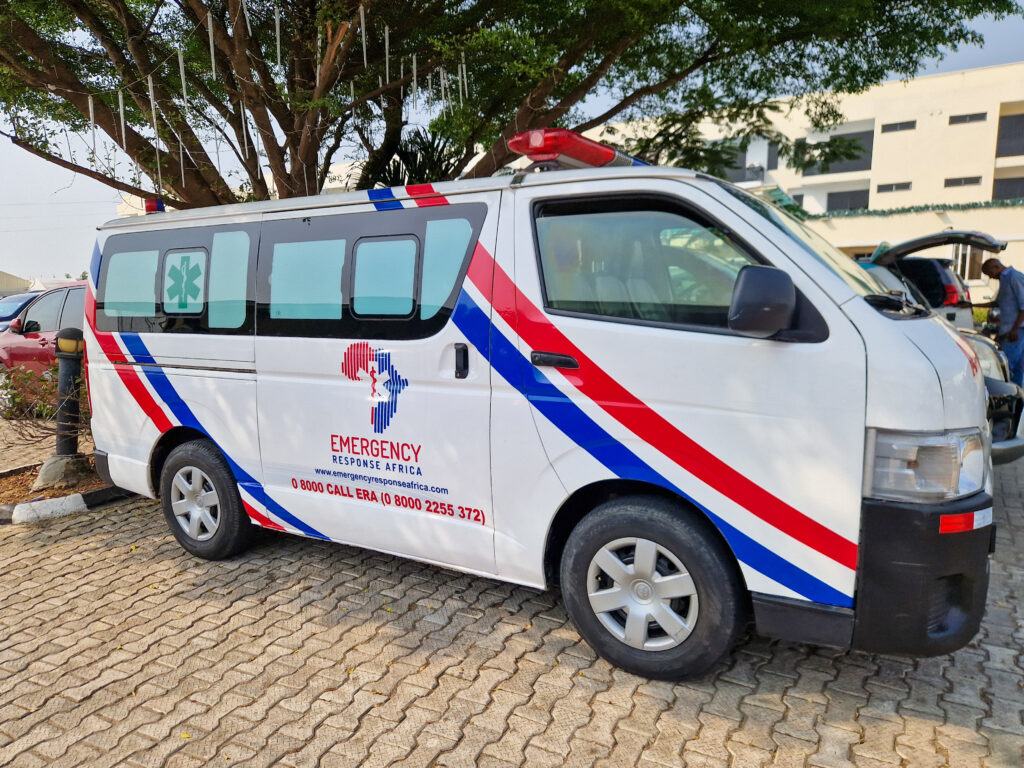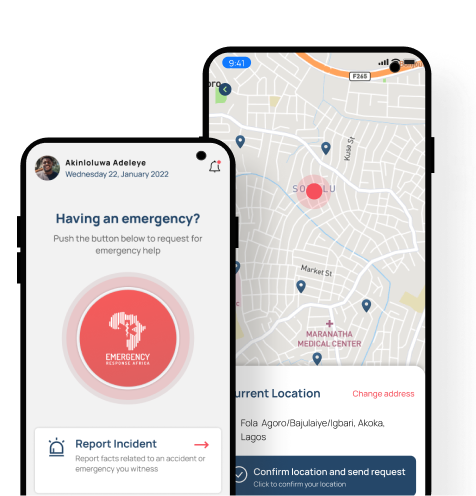Emergency situations happen every day in Lagos. Fires, floods, road crashes, and building collapses are common across the city.
In 2024 alone, Lagos State recorded over 1,600 emergency incidents, including more than 340 truck-related crashes and over 260 fire outbreaks. Many of these disasters claimed lives and left properties destroyed. In some cases, help came too late due to blocked roads or faulty rescue equipment.
These issues are not new, but they remain unsolved. Lagos is growing fast, yet its emergency response system is struggling to keep up.
This article discusses the key challenges of emergency response in Lagos, why they matter, and what can be done to create a faster, more effective system that saves lives.
1. Outdated Equipment and Limited Resources
Emergency response in Lagos is significantly slowed by outdated machinery and insufficient tools. The Lagos State Emergency Management Agency (LASEMA), which is responsible for coordinating rescue and disaster operations, still operates with equipment over a decade old.
Many of these tools such as cranes, earthmovers, and fire trucks, have surpassed their life expectancy. As of 2024, the state reportedly has just one functional crane for major rescue operations, which is grossly inadequate for a megacity of over 20 million people.
Worse still, sourcing spare parts for these aging machines has become nearly impossible, as some models are no longer in production. This forces LASEMA to rely on private contractors for crucial equipment; a costly and unreliable alternative.
In high-risk emergencies where every second counts, delays in contacting private contractors can mean the difference between life and death. Without urgent investment in modern tools and vehicles, Lagos risks repeated failure in its emergency interventions.
2. Shortage of Skilled Emergency Personnel
A well-equipped ambulance means little without skilled hands to operate it. Lagos suffers from a critical shortage of trained emergency workers, especially in the medical and firefighting sectors.
The health system, for example, is heavily impacted by brain drain. Many doctors, nurses, and paramedics have migrated in search of better pay and work conditions abroad.
This has left the state with a doctor-to-patient ratio far below the World Health Organization’s recommended standard of 1:600. In Lagos, some public hospitals have only one doctor attending to about 2,000 patients.
Fire services and rescue units also face a similar shortage. Many teams are stretched thin, with limited staff to respond to growing numbers of incidents across the city.
This shortage leaves gaps at every point in the emergency chain. It also leads to slower responses and more preventable deaths. Boosting training programs and offering better retention incentives is no longer optional; it is essential.
3. Inadequate Public Awareness and Preparedness
Even the best emergency system can fail if people don’t know how to use it.
In Lagos, many residents are unaware of basic steps to take during emergencies or how to access help. The official emergency numbers; 112 and 767 exist, but surveys and public complaints reveal that a large portion of the population either doesn’t know them, trust them, or believes they don’t work reliably.
Some have reported that when they dial these numbers, no one answers, or the call doesn’t go through due to poor network coverage or system failures.
In urgent situations, this confusion leads to dangerous delays. Instead of calling for professional help, bystanders may crowd the scene, film on their phones, or move injured victims improperly.
Misconceptions also persist, like ambulances being used mainly for transporting corpses, and fear of police involvement discourages people from reporting road accidents. Without city-wide education campaigns, these gaps in knowledge and trust will continue to cost lives.
4. Security Threats to Emergency Responders
Emergency responders in Lagos often face serious threats to their safety while trying to save lives. Attacks, mob interference, and hostility from frustrated crowds have become common.
A notable example occurred during a tanker explosion on the Lagos-Ibadan Expressway, where firefighters were chased away by armed individuals. This not only disrupted rescue operations but also endangered the lives of those involved.
In high-tension situations, especially in densely populated or economically stressed areas, responders are sometimes blamed for arriving late or failing to control the situation. As a result, they are assaulted verbally and physically.
These threats create fear among emergency workers, delay interventions, and sometimes force crews to wait for a police escort before acting.
5. Infrastructure Challenges and Accessibility Issues
Poor infrastructure remains a key obstacle to timely emergency response in Lagos. Many roads, especially in inner-city areas like Agege, Iyana Ipaja, and parts of Ikorodu, are riddled with potholes or are completely impassable during the rainy season.
Traffic congestion adds another layer of difficulty. Lagos is infamous for gridlock, with some routes taking hours to clear. In emergencies, ambulances and fire trucks are often stuck in traffic despite using sirens. In certain cases, responders are forced to abandon vehicles and continue on foot, wasting precious minutes.
Some neighborhoods, particularly informal settlements, lack access roads altogether. This means emergency teams can’t even enter certain areas without help from residents or alternative transport. To fix this, Lagos needs targeted infrastructure upgrades and clearer urban planning to ensure accessibility, especially in disaster-prone zones.
6. Climate Change and Environmental Hazards
Climate change is making emergency response in Lagos more complex and unpredictable. The city now experiences more frequent and intense rainfall, leading to flash floods that displace families, destroy property, and cut off access routes.
Every year, parts of Lagos, including Lekki, become submerged after just a few hours of rain, overwhelming drainage systems and delaying rescue efforts.
Rising sea levels also threaten coastal communities like Victoria Island and Epe, increasing the risk of flooding and saltwater intrusion. These environmental changes demand more proactive planning, yet Lagos still lacks a comprehensive disaster risk reduction strategy focused on climate adaptation.
Heatwaves, air pollution, and waste-related hazards are also on the rise, affecting both residents and emergency workers. Without updated climate-resilient policies, Lagos will continue to react to disasters rather than prepare for them.
7. Fragmented Coordination Among Agencies
Emergency response in Lagos often suffers from poor coordination between the many agencies involved. Bodies like the National Emergency Management Agency (NEMA), Lagos State Emergency Management Agency (LASEMA), the fire service, police, and health services all play critical roles—but they frequently operate in silos.
In the heat of a crisis, delays occur when there’s confusion over who leads the response, what protocols to follow, or how to share information. For example, during a major building collapse in 2023, conflicting reports from agencies caused delays in rescue efforts and miscommunication about casualty figures.
This fragmented system leads to duplication of duties, wasted resources, and reduced efficiency. The lack of a unified command structure and real-time communication tools weakens the overall response.
To fix this, Lagos needs a centralized emergency command center with clear protocols, joint training exercises, and interoperable communication systems to ensure all agencies work as one during emergencies.
Emergency Response Africa: A Smarter Way Forward

Emergency Response Africa (ERA) is a tech-driven emergency medical service provider transforming how people in Lagos access urgent care. We believe no one should lose their life simply because help didn’t arrive on time.
We connect people in distress to trained responders, fully equipped ambulances, and verified emergency-ready hospitals in minutes. Through our mobile app and 24/7 toll-free line (08000 2255 372), you can request help instantly, share your exact location, and get connected to the care you need—without confusion or delay.
Unlike traditional systems that struggle with poor coordination, we use technology to close the gap:
- We dispatch ambulances faster using real-time data and smart routing.
- You can track your ambulance as it approaches, so you’re never left in the dark.
- Our responders arrive prepared, offering on-site care before reaching the hospital.
- And we partner only with pre-assessed hospitals, so there are no surprises when you arrive.
Lagos is a city full of life, movement, and unpredictability. But with ERA, you don’t have to face an emergency alone. We’re here to respond, guide, and provide the care you need during emergencies. Don’t wait for a crisis, contact us at contact@emergencyresponseafrica.com today.
Frequently Asked Questions About Challenges of Emergency Response in Lagos
What Are the Biggest Challenges Facing Emergency Response in Lagos?
Lagos faces several major challenges, including outdated equipment, a shortage of trained emergency personnel, traffic congestion, poor infrastructure, and weak coordination between agencies. These issues combine to delay response times and reduce the effectiveness of life-saving efforts.
Why Does It Take So Long for Ambulances to Arrive in Lagos?
Traffic gridlock is a major reason, especially in densely populated or poorly planned areas. Emergency vehicles sometimes can’t access neighborhoods due to narrow roads or flooding. Delays also happen when there are not enough available ambulances or when dispatch systems are slow or uncoordinated.
How Do I Contact Emergency Services in Lagos?
Dial the toll-free emergency numbers 112 or 767 to reach government-owned emergency medical services. For private services, call 08000 2255 372 to contact Emergency Response Africa.
Are There Enough Ambulances and Trained Personnel in Lagos?
No, there’s a significant shortage. Lagos has too few functioning ambulances to serve its large population. Trained responders, especially paramedics and emergency doctors, are also limited—partly due to underinvestment and brain drain in the healthcare sector.
What Should I Do During An Emergency?
Call 112 or 767 to reach state emergency services, or contact a private provider like Emergency Response Africa at 08000 2255 372. Stay calm, give your location clearly, describe the emergency briefly, and follow any instructions. Avoid crowding or moving injured people unless there’s immediate danger.
What Is Being Done To Improve Emergency Response In Lagos?
Some state agencies are upgrading facilities and vehicles, and private groups like ERA are expanding their networks and training. However, for meaningful change, Lagos still needs better coordination, stronger public education, and sustained investment in emergency infrastructure.



